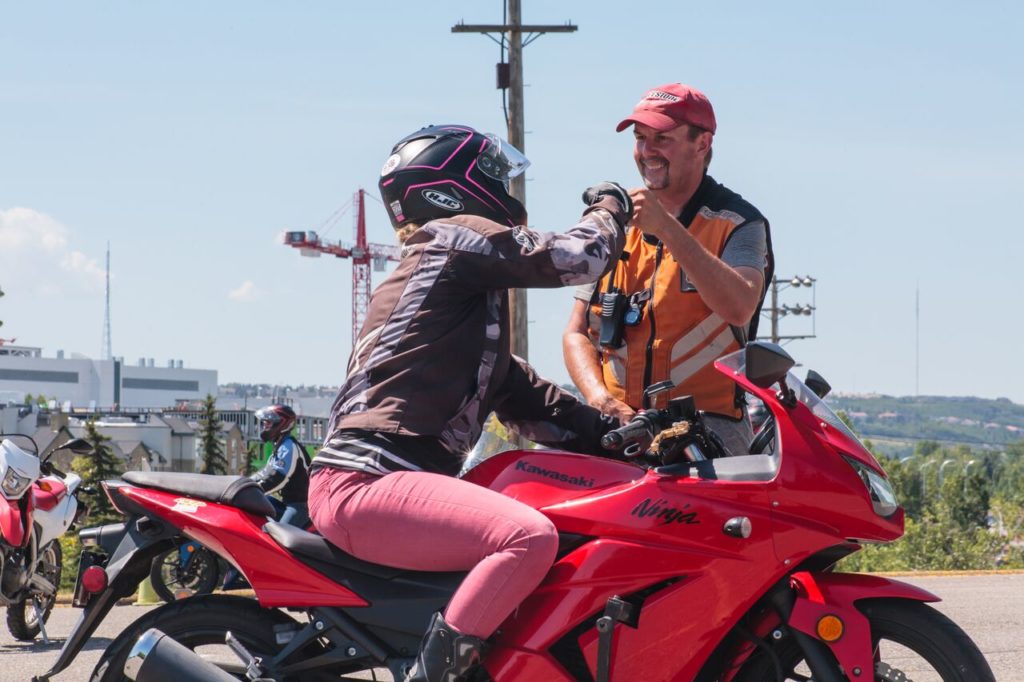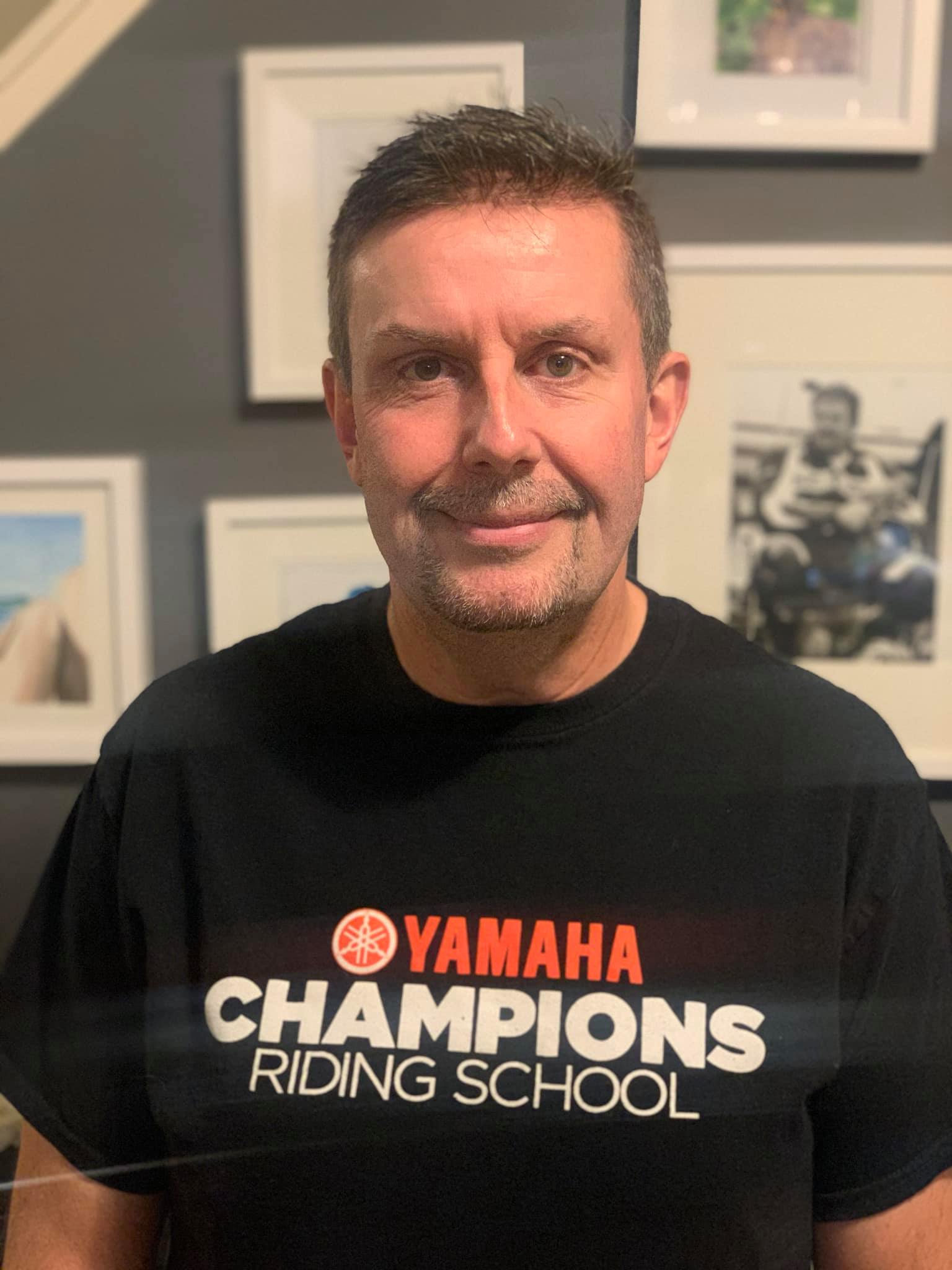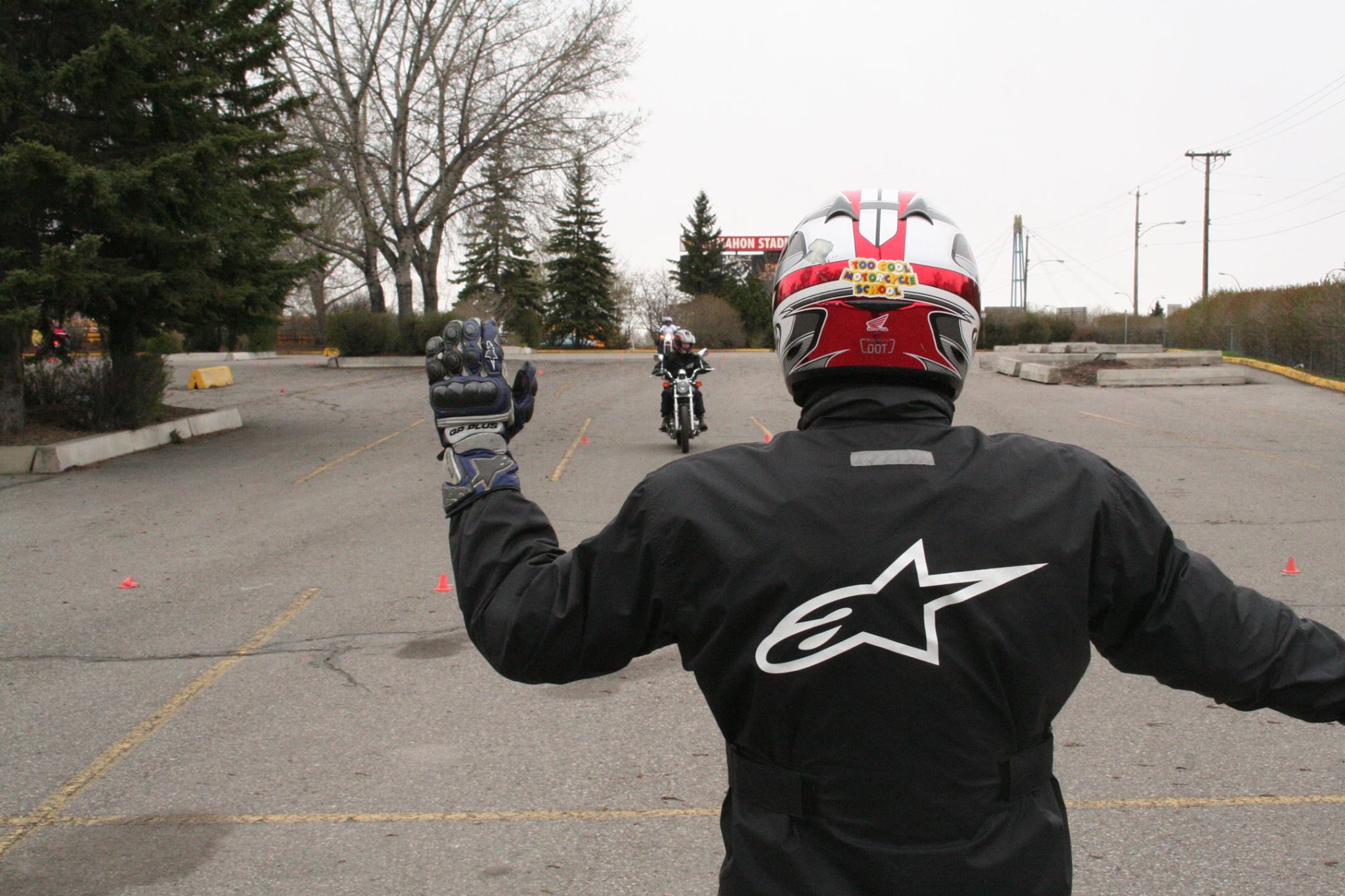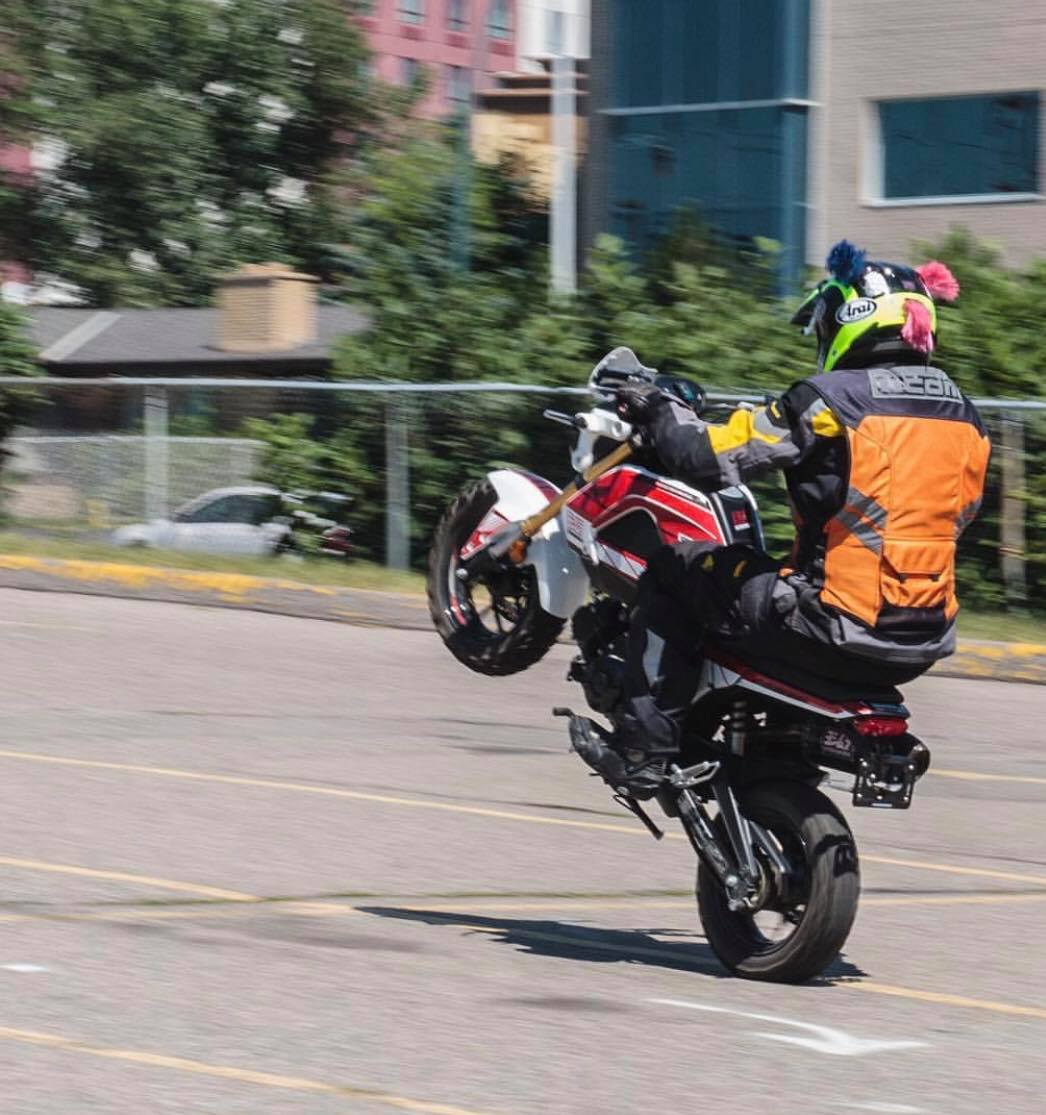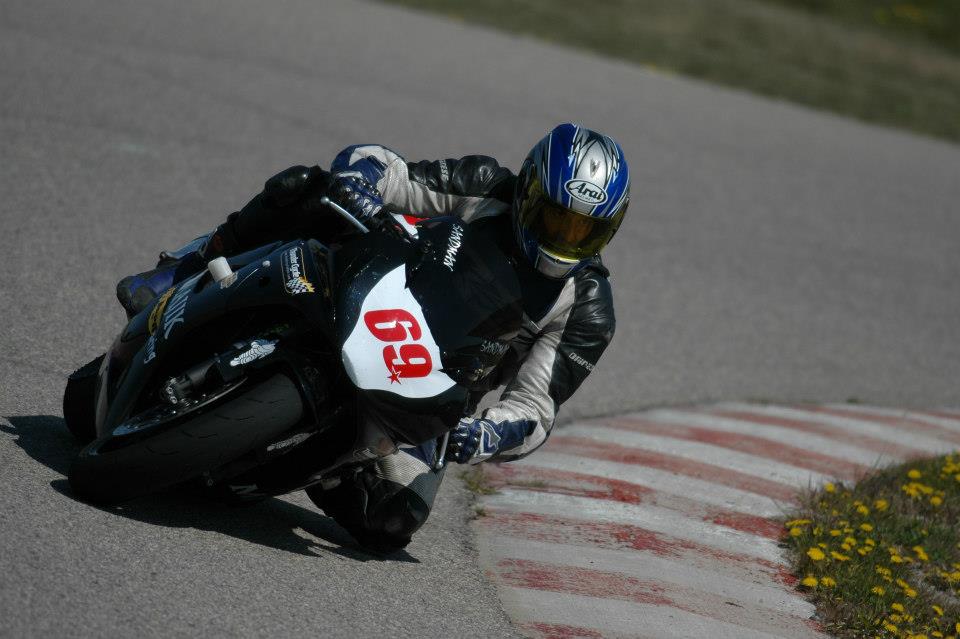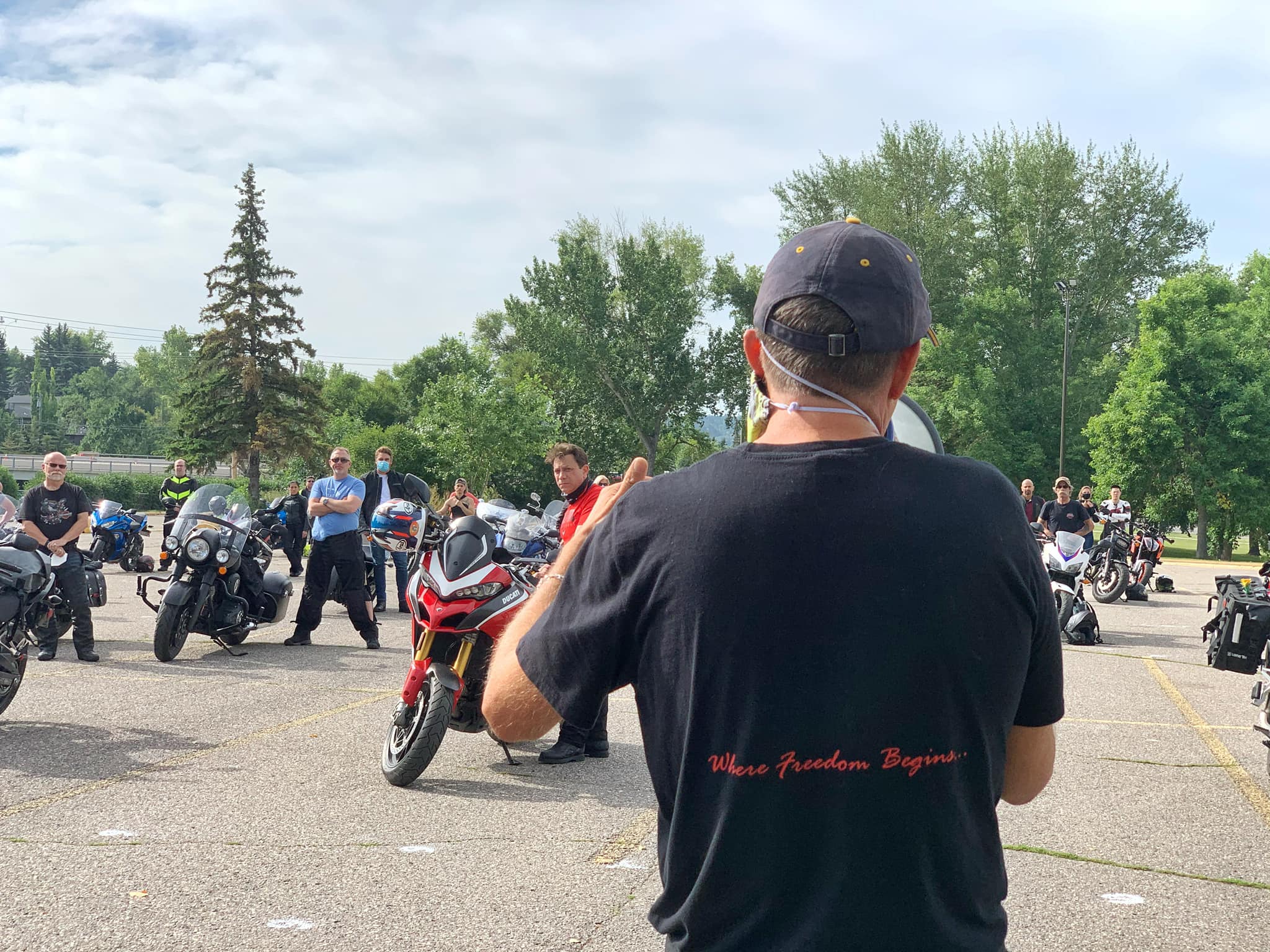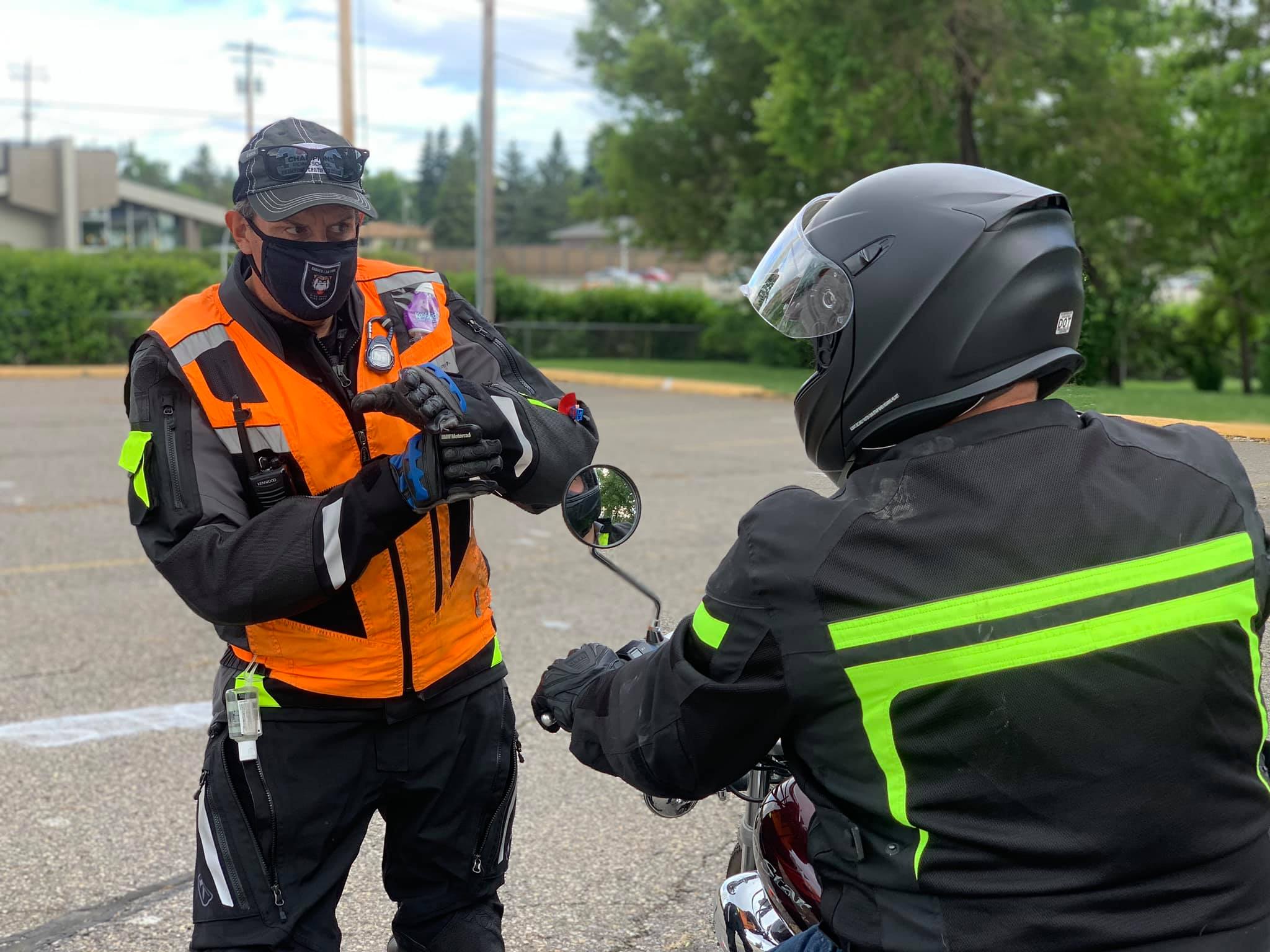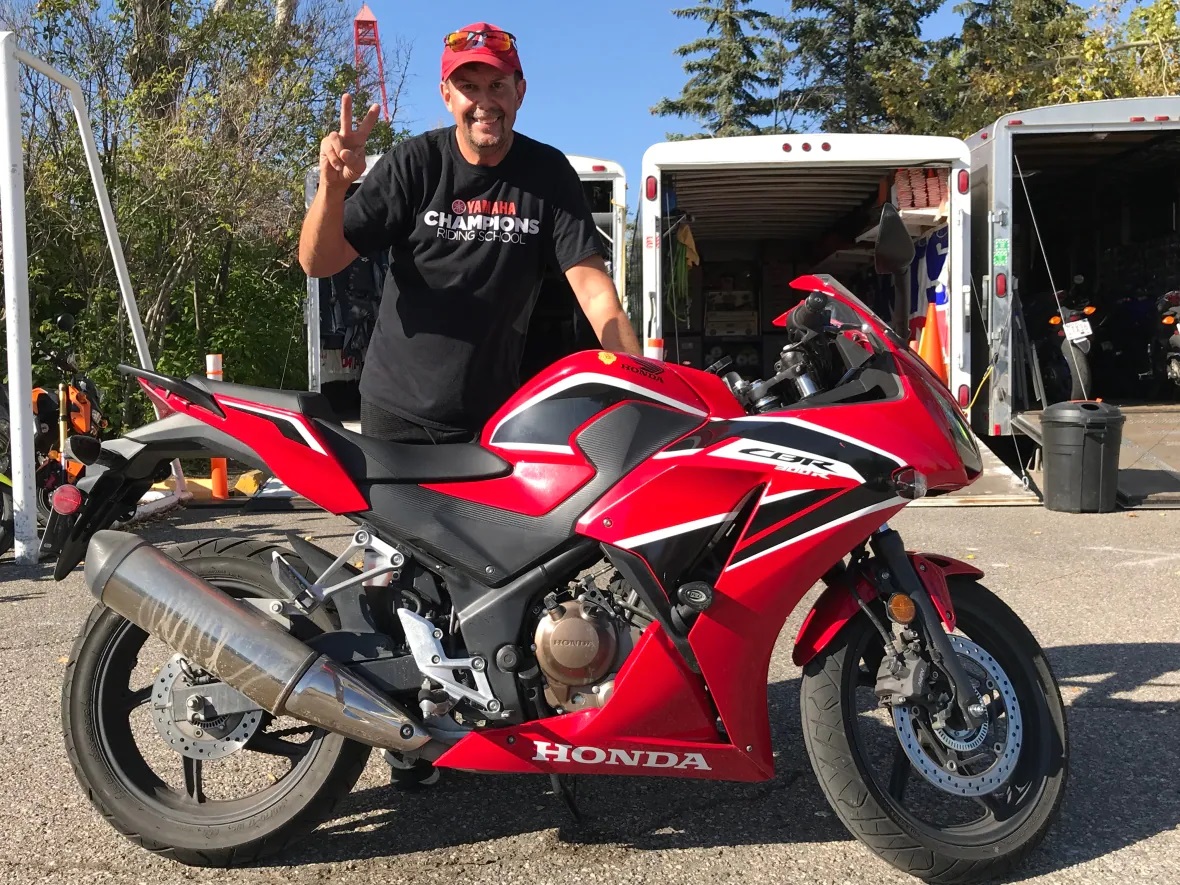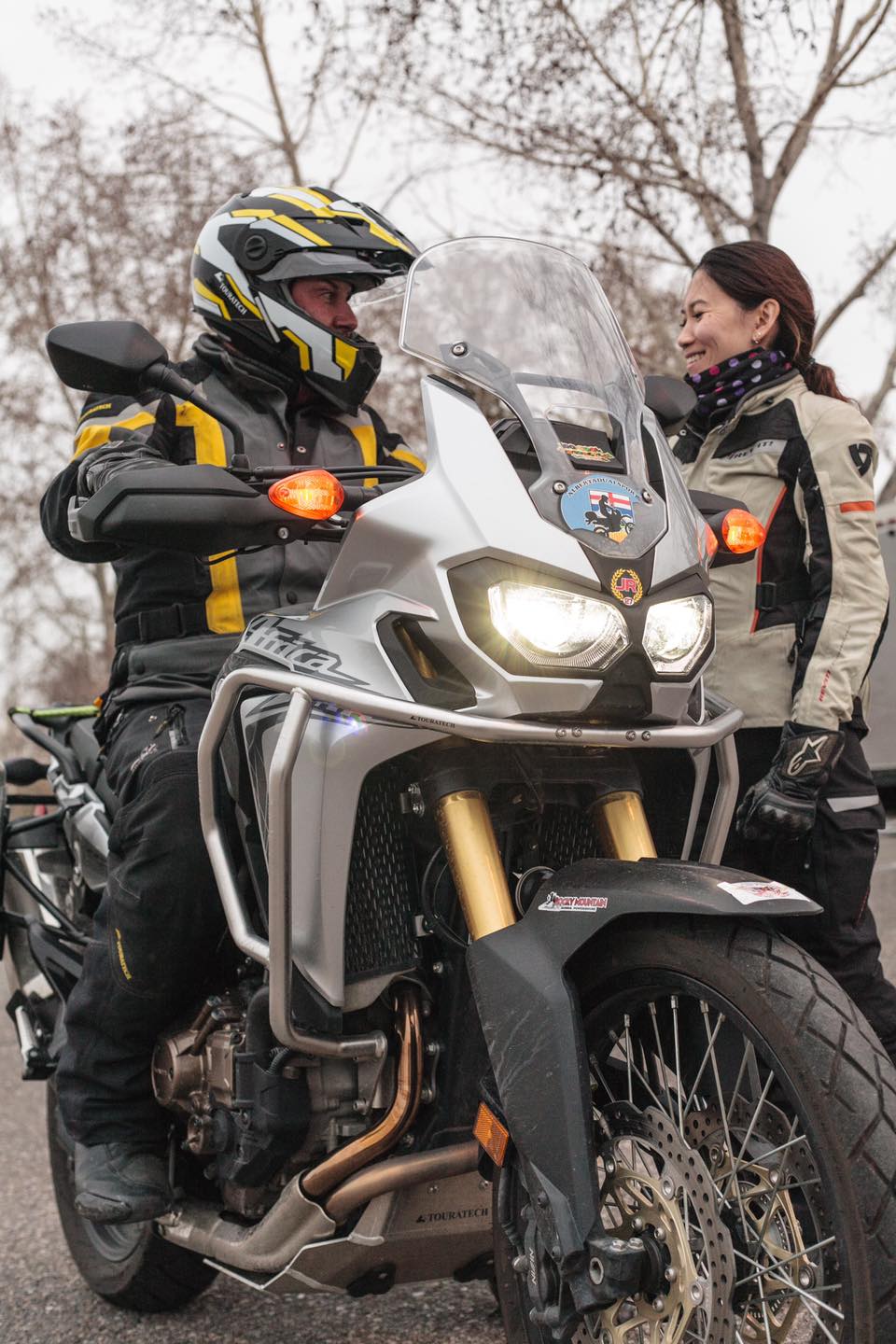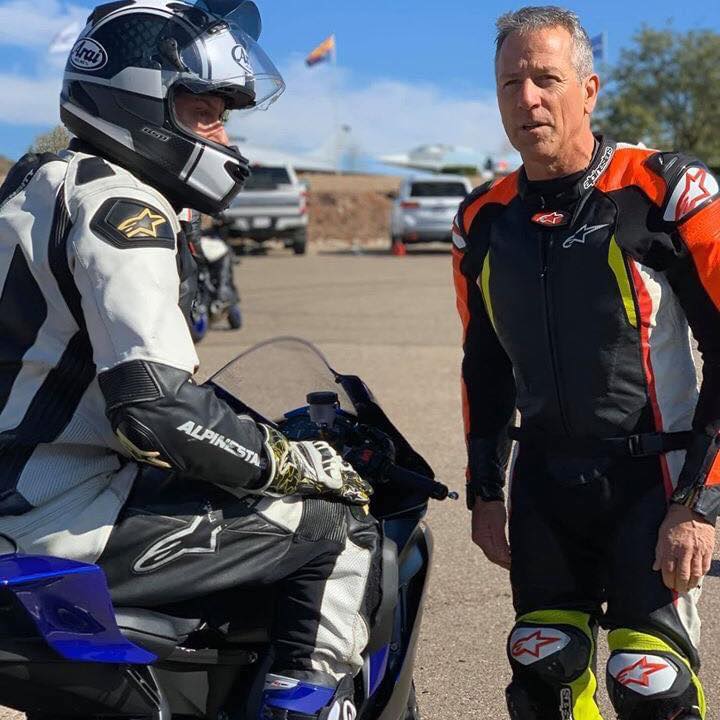All pictures used in this article were provided by Too Cool Motorcycle School and Trevor Dech
The first step after deciding you want to learn to ride a motorcycle is usually looking up training courses. In North America, there are multiple types of training courses that you can take, such as the Motorcycle Safety Foundation (MSF) course that is offered across almost the entirety of the USA, or small businesses operating as private training schools. In Canada, training is almost entirely through these small businesses, with a couple of provinces having government-run courses.
When I decided to learn how to ride a bike myself in the past few years, I too looked up training courses, what they offered, costs, did the comparisons, read all the reviews, and eventually settled on a course that was offered by Too Cool Motorcycle School. Apart from some excellent alliteration in the name of the school, I signed up for the Silver course, which was 18.5 hours of training and a road ride at the end, expecting to go through the same bog-standard style of training that I did decades ago for my driver’s license.
Little did I know that I had stumbled upon a course that was anything but bog-standard. The instructors weren’t just there to get a paycheque, they were there to teach. I would even venture a guess that even if they weren’t paid, they’d still be there teaching because that is how much passion they had for the two-wheeled lifestyle. The reason for this is that each instructor has been handpicked by the chief instructor and owner of Too Cool, Mr. Trevor Dech.
Trevor Dech, Chief Instructor & Owner Of Too Cool Motorcycle School
To say that riding is in Trevor’s blood is like saying that the oceans of Earth consist of saltwater. When he was just three his father, a heavy-duty mechanic, would buy up broken-down motorcycles and lawnmowers, work his mechanical magic to bring them back to life, and since these were 25cc and 50cc small motorcycles, young Trevor was sat on them and let loose to ride around a small field, making sure the bikes worked. In effect, while most of us were learning our ABCs, he was learning how to ride.
He has had a long career to date training over 28,500 new riders, some of who travel from out of town just to attend the course, while also dabbling in superbike racing when he can find the time. He rides an ADV at the moment, mostly because it has the pannier lockers to carry stuff for the road ride portions of the training course, although he will openly admit that he misses leaning forward, low over a fuel tank, with two low slung clip-on handlebars in his hands.
He has also qualified as a Yamaha Champions Riding School (YCS) coach, one of the first 3C qualified in Canada. Through his multiple experiences with expert-level racing instructors, he has adapted and integrated parts of what he learned into the Too Cool curriculum. Most of the instructors have also taken at least the basic YCS course, which involves up to five days of track riding, learning the ins and outs of motorcycle riding at speed.
I would like to start this section by thanking Mr. Trevor Dech for putting aside the time for this interview. When you run a training school, with multiple tiers of training offered, and work six days a week (he’s really that passionate!) training new riders, finding even an hour free can be a challenge.
Disclaimer: I personally attended Too Cool Motorcycle School, so if there is any unintentional bias in the interview, it is from familiarity with Trevor and the school. I have endeavored to keep as much bias out of the transcription of the interview as possible.
Note: Content has been edited for clarity and conciseness, as Trevor, being an instructor, likes to pass a lot of information along in his answers!
Trevor doing his famous “emergency maneuver to the side of the dropped hand” instructional technique
Simon Bertram (SB): Trevor, thanks for setting aside the time for this interview, I know how busy you are now that the weather is nicer and the roads are clear.
Trevor Dech (TD): It’s a good thing! I would rather be busy teaching than staring out the window at some snow! (Note: Calgary experienced a weekend of snowfall two weeks before the interview)
SB: Don’t curse it! For interviews about motorcycles and riders, one thing I always ask is what was the turning point, decision, or event in your life that made you realize you wanted to swing a leg over and get some right wrist twist happening?
TD: Honestly, I didn’t really plan to ride. I was at the age of three, and my dad was a heavy-duty mechanic that worked on Caterpillar machines. He liked to fiddle with lawnmowers and really anything that had an engine. He had this idea to buy up wrecked bikes, used bikes, and the like, and then repair and refurbish them. He would then take me out along the QE2 (Note: The major highway North of Calgary) before they put the retaining fences up, and he got me to put a leg over in one of the flat fields out there and, in a way, I basically became his test rider. At age three.
It was also when I learned my first lesson about fuel taps. I was riding one of the bikes until I ran out of fuel, and it was a ways away from my dad, so I walked over and he told me I needed to turn the fuel tap over to the other tank. Of course, I didn’t know what a fuel tap was, so he told me where to find it and what to do. I walked back to the bike, but at that age, I wasn’t strong enough to turn it, as it had rusted up. So, annoyed, he walked over and flipped the tap over for me, and the bike fired right back up on the first kick.
My job, apart from test riding, was that after school, I would come home and clean the bikes, and he would sell them. I got $10 for each bike sold, and I did the same with lawnmowers, but I only got $5 for each one sold. So, that’s how I started riding, it was kind of a job in a way, but a fun one.
Also, because of that fuel tap incident, that is why at the start of the first day of training, we walk around the training area and show the road markings, pylons, and such so that we don’t have to walk over again to point them out again. Better to know the first time, because I paid my dues back in 1970 when I had to walk back and forth to the point I annoyed my dad! (laughs)
SB: I remember that walk, thinking it was odd to walk entirely by the motorcycles we were here to learn to ride until you and Daynon (Note: Assistant instructor for my course) started to point out what all the spray-painted markings on the lot meant.
I also remember you talking about racing as part of the “Get to know Trevor” introduction at the start of the course. My next question is, what brought you into motorcycle racing?
Who said being a chief instructor had to be a boring job? Trevor popping a wheelie on the modified Honda GROM that is at the school to show that small bikes don’t have to be sneered down on!
TD: It’s interesting how that happened… I raced a little bit in 1986, when Race City Speedway was less than a year old, and at the time I had a Honda NS400R two-stroke. I was out there helping my friend Jim, who had sponsorship from Rothman’s Honda, and it just happened that eventually, I got brought into the sponsorship and was racing in 86, 87 as part of the CMRA. I also helped out with getting the CMRA established and up and running, doing what I could.
I started teaching in 1991, and after a while, around 2003, I just went to the track and my friends were there, and one of them gave me an R6 and said “Why don’t you go out in a race, see how you do, see if you still ‘got it.’” I went “O-kay,” and jumped on, went out with the novice division, and I beat just about everybody in that race.
I thought “well, I still got it, and this would be kind of cool to do!” So, I decided to go ahead and do it. I started racing again in 2003 and spent a year in the amateur class. I was considering going up to pro, but I only went to the qualifying and race days on Sundays, because I had made the commitment to run Too Cool on Saturdays with the weekend classes. Even so, I won both the heavyweight and superbike divisions in the amateur class in 2004, and moved up to pro, where I ended up finishing fifth overall in 2005, out of 70 riders.
I was actually going to keep going… I got out of racing not because I retired, but because in my final race, going into turn one at Race City, I got hit by a lapper. I actually got bumped twice, and the second hit pushed me off at 180 KPH, with the bike tumbling and smashing into pieces as I slid out onto the grass and then into the infamous drainage ditch that was on the outside of turn two. The thing is, I was supposed to sell that bike to someone that was there at the race for $4,000, and I had saved up another $4,000, and was going to buy a 1,000cc superbike from the guy that won the Canadian Superbike Championship.
As you can imagine, the bike was not worth $4,000 by the time all the pieces were brought back to the pits, and so that sale fell through. I realized then that I just didn’t have the money to be able to continue racing on my own. So I got out of it and dedicated myself entirely to Too Cool, to grow the business and the school, and then Race City closed down in 2011 so that opportunity disappeared.
As you can probably see, Trevor, while still being dedicated to teaching new riders, was able to get some serious race time and experience. The fact that he won the amateur heavyweight and superbike divisions in 2004 without taking part in the practice sessions on Saturdays speaks volumes as to why he was and still is called a natural talent on two wheels.
This is something that I can personally recall about the Too Cool course, as for the first day and a half, we had gone over balancing, first gear starts and stops, and basic slow-speed maneuvers, astride Kawasaki Ninja 300s and Yamaha R3s. It was a fun day, the sun was out, the pavement was warm, and during our water break before moving on to moderate speed maneuvers, Trevor and Daynon took a couple of the R3s and then started to lap the training lot at absurd speed for the small space. It was surprising, to say the least, but they were riding those R3s as if they were part of their bodies.
After they pulled up to a stop, Trevor then explained that what they had just done was to show that with proper technique and “listening” to all the information the bike was communicating to you, you could do some pretty amazing things on two wheels in a safe, controlled manner. It also helps that the Yamaha R3 is one of the best bikes you can learn supersport riding on, as it is, despite any claims to the other, a race bike with mirrors on it that is incredibly forgiving to a new rider, and a scalpel in experienced hands.
When Trevor says he knows how far a bike can lean over, he isn’t kidding. This is Trevor in 2003-2004 during his run to the top step of the CMRA Amateur and Heavyweight classes.
SB: So now that we know Trevor Dech, the rider, it’s time to shift gears to learn about what Trevor Dech, the instructor, will say to help out the readers of BestBeginnerMotorcycles with some of the lessons you’ve learned over nearly three decades of teaching. The first question, leading out of the discussion we just had, is are there any tips, tricks, or things about racing that you’ve incorporated into the course and consider a vital skill for new riders?
TD: That’s a good question, and one of the things I noticed back when I was racing in 86 and 87 was that before hitting the track, when I was going on the highway at 100 or 110 KPH, that felt fast. After coming back from the track and riding on the highway again, all of a sudden 120 KPH felt slow, compared to riding down the front straight at Race City over 280 KPH. My visual processing was quicker, my understanding of road conditions and potential hazards was sharper, and while I knew that I could take a corner at say, 180 KPH and come out just fine, with the speed limit at 70 KPH I had that buffer of 110 KPH difference to be more aware.
That is why we will try, with the new track that opened this year, to get our students out there so they can take the bikes to higher speeds in a safe, controlled environment, and why we have the road ride at the end of the course as well. Going from a maximum of 35 KPH in the lot, to almost immediately riding at 60, 70, 80 KPH… you realize after those runs on the major roads that riding 50 KPH on main roads gives you that extra buffer to be more aware, use more of your vision, and in general be safer.
That’s also why we also kept saying throughout every day, every exercise: body position, and eyes forward. Motorcycles have been developed and designed to be ridden in a certain way, unlike any other vehicle, in which your body position greatly influences the moment-to-moment risk of your ride. As an example, you could take a corner while sitting straight up on the seat, and then lean the bike in. This would need to have a significant amount of lean to take the corner, which means you’re more on the edge of the tire, and there is only a certain amount of grip there.
Trevor hosting a little fun ride through the mountains with a bunch of former students over years past.
Now take that same corner, but with your body down and to the inside, forward over the handlebars a bit, and all of a sudden, the bike is much more upright, with more tire contact on the road, and much more available grip in case of needing to make an emergency maneuver. That’s another thing adapted from racing, if you remember the emergency maneuvers day, when if you needed to do an emergency stop in a corner, how you did do the counter-intuitive thing of dropping your head down and forwards into the corner? By lowering your body position and moving more weight to the inside, the bike is now almost completely upright, and you have much less risk of sliding out the front or rear tire into a low-side crash as you quickly but progressively apply both brakes.
SB: I do remember that, and the genuine surprise of how the bike was telling me it wanted to be upright, despite taking the corner at the bottom of the training lot at nearly 30 KPH.
TD: Exactly! That’s why we had so much of the body positioning training during the slow speed regular maneuvers, like keeping your eyes up and looking where you want to go during the U-turns section and never looking down at the ground, or that section on trail braking in a corner and using the body position to come to a complete stop at the end of the turn. If you don’t position your body for the turn and keep the bike mostly upright while on the front brakes, you’ll slide out into a low-side crash.
If your readers want to have a core concept to focus on and really nail down as they grow their riding skills, it’s body position, body position, body position.
Each bike you ride will tell you how it wants to be ridden, and if you listen to what it’s telling you and move your body in the right way, it makes for a much safer ride. That’s also why you can’t, for example, apply the same style of riding you have for your own bike, the Ninja 650 and then go ride a Harley or an Indian and expect to be able to use those same positions. You need to let the bike tell you what it wants, and learn to dance with the bike.
I like to put it as “You don’t leave a partner and then try to dance with another partner in the same way you did your first. The only thing you’ll end up with then is two ex-partners.” Feel out their rhythm, let them step on your toes once or twice, and before you know it, you’ll be waltzing all night long.
SB: While racing has been a major input on the way the course is developed, have you experienced any growing pains or things that you yourself have learned while teaching new riders?
Even during COVID, as more and more people needed to just get out and do something, but keep social distancing, Trevor was out there training new riders.
TD: Every business has growing pains, but as to learning from teaching, the year before COVID, we were expanding our instructor lineup and had seven applicants. Two were fully certified professional instructors with multiple courses under their belts, and five were Too Cool alumni that had gained a lot of experience from their daily riding. Of course, it would seem that the easy choice would be to hire the two professional instructors, but the wife and I wanted to meet and talk to each applicant.
Speaking with them really made me realize the importance of one of the core philosophies I have about the school and riding in general, which is: “The day I stop learning is the day I hang up my helmet.” Both of the professional instructors didn’t even finish their interviews, because we asked all the applicants the same series of questions, and both of the certified instructors stated that they were there to teach the students only, not to learn or expand their own skill sets.
Since I know that this interview is going onto a new rider website, I really want to emphasize that point. Never stop learning. If we didn’t learn and listen, we wouldn’t have evolved the course from a basic “here’s how to ride” to the current course of “here’s how to ride, and how to avoid deer, and how to emergency brake safely, and how to…” and so on.
I even remember listening to you talk to the other students during water breaks about how you had researched the materials and armor in the gear you were wearing, to maximize both the value you got out of it as well as keep you as safe as possible. Even though it wasn’t feedback to me directly, I learned from that, and it’s led to us learning more about the gear we receive from sponsors for the school, which has added value to the course and to the school because we know we’re getting some pretty great stuff.
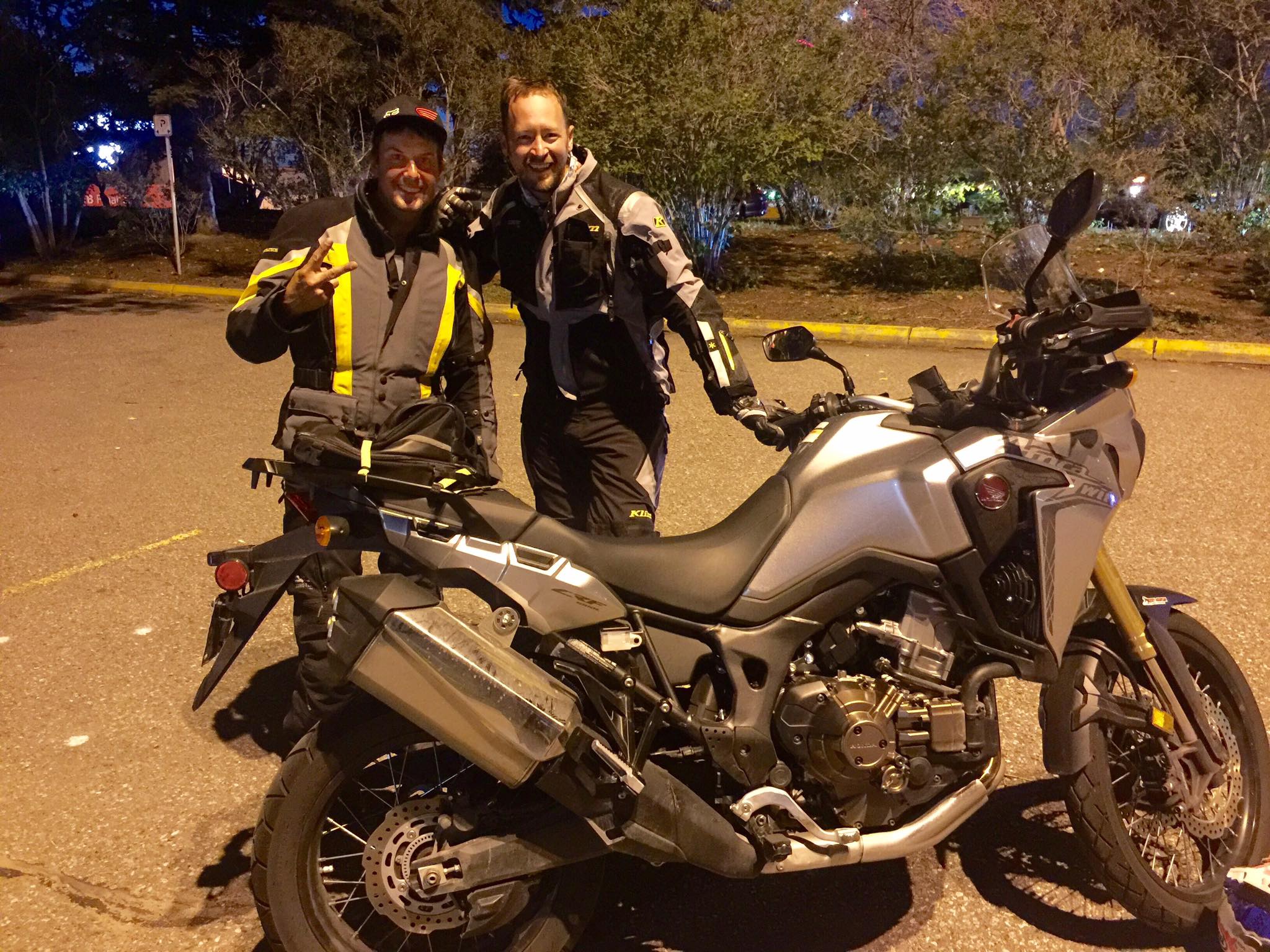
While this section was quite lengthy, you can tell from Trevor’s enthusiasm about it that he’s really passionate about teaching and learning. Since it was a bit of a long wall of words, I thought it would be best to bring out the three major points that he emphasized as vital for new riders to grow and evolve.
Body position is probably the most vital of them all. Shifting your body to be on the inside and forward in a turn keeps the bike more upright, giving you a larger contact patch and also allowing for a much more rapid response to potentially needing to perform emergency braking in higher speed curves (speeds over 30KPH/15 MPH). Keeping your head up and eyes on the horizon during slow speed turns also makes your body, and hence the bike, want to turn with you, and is how you can achieve great 90-degree turns and even work it into your u-turn practice.
Listen to how the bike wants to be ridden. While the bike can’t talk, it will still “talk” to you, through the pegs, the handlebars, the seat, and your knees as they are tight to the tank. Each style of bike has a different way of riding it, and each model of a bike within those styles is not like another. If you try to ride a Ninja 400 like a YZF-R3, it just doesn’t respond the same way. If you try to ride a Honda CBR600RR like an Indian Scout, again, it won’t respond the same way.
While there is a commonality in that all bikes have handlebars, footrests, a seat, two wheels, and a tank of flammable liquid directly above a metal device meant to harness the power of explosions, that’s about all that is common between bikes. These machines are fine-tuned by test riders and computer simulations at the company HQ’s to both be ridden in a specific way and also to inform the rider of what that specific way is. “Holding a conversation” with your bike every time you ride lets you get the most enjoyment out of each trip if you work with the design of the bike to extract maximum fun.
Never stop learning. A great quote I once read about this is about why the MSF is called a foundation. It’s not just a large group of schools operating the same curriculum, it’s the fact that the course is not the end of the journey, it’s the beginning, and it’s there to build a strong foundation for you to build your house of skills upon, brick by brick.
This also leads to why Trevor himself is constantly looking for opportunities to expand his own skillset. He has had the opportunity to attend the Freddie Spencer High-Performance Riding School before it closed down in 2008, and came out of the school with an appreciation for how some supersport, superbike, and especially flat-track pros can literally “back” the bike into a corner, the rear wheel sliding out while in perfect control so they can line up the apex, then the exit and rocket out of the corner with wide-open right wrist.
At this point in the interview, as I was a student of Trevor’s when I attended Too Cool, we did get a bit sidetracked about how each of the above three concepts was incorporated into almost all individual portions of the curriculum. Looking back, while I didn’t even realize it at the time, 95% of all the lessons, while cleverly disguising it in fun things to do and other concepts, were about body position.
By “distracting” us by having us watch for a hand signal, or to focus on the steps of shifting gears, body position was slowly, carefully sculpted into our brains. Even now, two seasons in, I’m still not even thinking about body position, because I let the bike tell me where it wants me to be and I just automatically find the right position to be in because of that conversation I’m having with my Ninja 650.
On the subject of what I ride, and more generally, what anyone rides, there was a great answer from Trevor to that exact question…
SB: Since BestBeginnerMotorcycles literally spells out what the site is about in the name, what are your thoughts on some best beginner bikes? Are there any you’d recommend? Any to steer away from, pun unintended?
TD: That… is a question I love answering. The scripted response is “stay 300cc or less, don’t go for a supersport right off the bat,” and the like. That’s honestly fine and for half the new riders out there, go ahead. There’s nothing wrong with a smaller displacement bike, they’re great to rev up and so much fun to ride. That’s why on the fourth day of the course, we have everyone choose three different bikes to ride throughout the day, and why we have the Honda GROMs. That’s also why we have the R3s, as they are supersport bikes that you can learn to ride with.
Trevor with a great beginner bike that is used at the school, a Honda CBR300R. The bike was donated to the school by a sponsor and is named Roosevelt, after the sponsor’s dog’s name. The other two are a 2018 YZF-R3 named Winston and a MT-03 arriving this year named Anastasia, after the sponsors’ daughter.
What it really comes down to, however, is what bike you feel most comfortable on. It could a 300cc R3, it could be a CBR500R, it could be a 750cc, it could even be a 2,500cc (Triumph Rocket 3) intercity highway crusher. What matters the most is how it feels when you sit on it. We’re all connected from our head to our throttle hand, and I’ll explain what I mean by that.
Bluntly, if you’re going to be a raging idiot on a 250cc, you’re going to be a raging idiot on a 1,000cc bike. That’s where training schools come in, as we put the buffer between the temptation of the wrist and the way that a bike instantly responds, even if it’s a heavy V-twin cruiser. I was asked once by a student why we didn’t teach with “real bikes like a 600,” until they were practicing moving off and dumped the clutch, lifting the front wheel of the bike up, and nearly toppling off. I then walked over to him and simply said, while he was sitting there breathing heavily, “that’s why.”
There are bikes out there for everyone, and everyone suits a type of bike. When you came by the school after getting your class 6 on your Ninja 650, with the more upright position and the relaxed but still rearward pegs, I thought “That’s a great bike for Simon, it suits the riding style I saw him demonstrate in the course.” You’re a taller, heavier rider, and a 650cc is a great parallel-twin engine size for you, as it’s not too little or too much, and the bike really fits you.
For me, my Honda Africa Twin is not my favorite bike. I prefer to be tipped forward, with a higher saddle and lower handlebars, but that is not a realistic bike for needing to carry around the things I do. There are some riders out there that for them, the most comfortable riding style and position for them is to be stretched all the way out, ape-hangers and floor-boards, because that’s what they like and that’s what suits them.
Trevor astride his primary motorcycle, a 2016 Honda Africa Twin 1000 DCT, with the person that he personally states helps keep Too Cool Motorcycle School going (and the Motorcycle Operations Manager, the M.O.M. of all his students), his wife Lanchi Dech.
The best advice I can give on the subject of a best bike is this: The biggest thing is to find the niche that fits you best.
Some people come into the school swearing they want to learn how to ride so they can buy their dream sportbike, and then show up after graduation riding a dual-sport. That’s one of the things I have built into our school, as you even mentioned that first day when you saw the bike lineup, is that we try to have at least one of every type of bike. While we may not have a Harley per se, we do have Yamaha V-Star 250s, so those that think they want cruisers can try out the cruiser-style riding position.
So, when asked that question it’s not so much “these are your choices, pick one…” what I say is:
Do your research, take a training course, then go to the showrooms and actually sit on the bikes. Book a test ride if you find one you really like. Go to demo days if there’s one near you. You won’t know what the best bike for you is until you actually experience the bike. But honestly, you will sit on it and just know it’s for you. As I often say, before training, you buy a bike on the two C’s the color and the curves. After training, you buy it for two more C’s. Controls and Comfort. That’s the real secret.
SB: I got that sense when I was taking the course. I remember being gently told that the Ninja 300 I had been riding for the course was no longer an option for me on the fourth day, so I swung a leg over an R3. My wrists and lower back were aching probably five minutes in, and I knew then and there that a supersport is definitely not for me. Then you had me try the CR250L, and immediately, the standard position was what felt right, even though the bike was skinny and made my tailbone a touch sore.
The best of both worlds came with the Ninja 650, which is a standard sitting position, with high bars, but still tipped forward a little to get the feel of what the front wheel is doing.
Following on from that question, and literally in the same vein, we here at BBM are very much of the all the gear, all the time (ATGATT) school of thought. As you have several decades’ worth of experience and have worn everything from touring gear to race leathers, what are your thoughts on ATTGAT and gear for new riders?
TD: My thoughts on gear can both be summarized very easily, and also in an incredibly complex way. Since your readers are mostly new riders, I’ll summarize it the easy way. (Laughs)
I treat riding as a sport. I’ve raced in it as a sport, I’ve done off-roading on bikes as a sport, so to me, this hobby and method of transport is a sport. Now, take that concept, and then look at American Football or the National Hockey League. All those professional athletes have been able to come up through the ranks and play to a level of expertise that they do because they wear the gear that is appropriate for the sport, and are designed to keep you safe as you participate.
Take hockey, for example. As you come up through the youth leagues, then the bantams, then the juniors, and so on, you wear a helmet with a full metal mesh shield. It used to be that you didn’t have to wear anything until enough kids and teens were losing teeth and getting eye and facial injuries that could be lifelong to change the regulations. Nowadays, to get to the professional level, where visors are mandated but not full shields, by the time you’re up there, the leagues operate with the concept that each player accepts the risk that not wearing a full shield brings to the table.
Bringing this back to motorcycle gear, let’s look at it this way. Let’s say you don’t have riding pants, you have a jacket but no back protector, and you have a helmet and gloves… then you have to ride accordingly. Now you’re riding with less protection than what is optimal, so you have to increase the mitigation of risk as you ride. Increase your following distance from those standard three seconds to five seconds. You have to be careful with the speed limit. You now have to be extra cautious with everything you do, because if something goes wrong, you’re going to pay dearly for it.
Trevor attending the Yamaha Championship Riding School in his full Alpinestars race gear and Arai helmet. He also knows the lead instructor, Mr Nick Ienatsch (right), quite well, and calls him a friend and a mentor, and he even sometimes gets the pleasure to coach beside him.
To put it another way: Fixing a bike, you just need parts. Fixing a human… that’s a bit more complicated, and healing takes a long time. So I would rather wear a full set of gear, or as the saying is “All The Gear, All The Time,” so I can be at that level that I want to be at in the sport. If something does go wrong, I can minimize injuries and get back up and ride again faster than if I had to have skin grafts for road rash.
That’s what we try to instill at the school as well, as we provide everything except the pants, as we don’t have a washing machine and dryer out at the training lot, and why no khakis or thin material pants are allowed. When I was at my previous riding school, which I didn’t own, all we provided were helmets. People would ride in sneakers, hiking boots, and steel-toed work boots… people would fall and would break their ankles, meaning they couldn’t finish the class, but more importantly, meaning that there was a risk of them having lifelong, or life-altering, injuries because they didn’t learn about appropriate gear from the outset.
Because we put in the effort to get sponsored by gear companies, if someone at our school falls off the bike, they don’t realize that the reactive armor back protectors, the reinforced boots, and the armored gloves prevented them from getting a serious injury. If someone at Too Cool comes off as some people did in 1994, the outcome is very different because we have the most gear we can to protect them with.
It is all up to the rider, however, and as much as there are sayings such as “dress for the slide, not for the ride,” and the acronyms such as ATGATT, the amount of risk a rider is willing to accept, and ride accordingly to that risk, is out of anyone else’s hands. If you can, and want to, wear a full set of gear, you’ve minimized the risk as much as you can. If you go riding in just a helmet, ride accordingly, ride cautiously, and don’t be an idiot weaving through cars and trying to get your knee down on the public roads.
If you want to get a knee down, get some race leathers, go to the track, and do it where it’s in a controlled, safe-as-possible environment.
As much as we like to bang on about ATGATT here at BBM, Trevor does bring up the core point of riding. Motorcycles, by their very nature, are inherently more dangerous than cars. Cars have built-in armor from the materials they are made of, protective devices, and the like. Nowadays, if you had the choice between buying a car with side-curtain airbags, reinforced door beams, crumple zones, and one that just had an airbag in the steering wheel, 99.9% of people would go with the one with more safety equipment.
While part of motorcycling is a touch of the rebellious nature of them, the freedom of being out in the wind, feeling the bike underneath you carving, gripping, telling you what it wants more of, you also have to take into account that, unlike a car, if one of your wheels slides, that’s it. There is no backup, there is no other front or rear wheel to suddenly assume the grip.
The biggest takeaway from Trevor’s answer is that if you don’t want, or don’t have, a piece of gear yet, ride accordingly. Go riding in a t-shirt, shorts, and flip-flops with your helmet? Ride accordingly, giving lots of following room, head on a swivel, and be prepared for the reality that if you do crash or get knocked off, you are far more likely to sustain life-altering, or life-ending, injuries.
Have all the gear? Ride accordingly, give following room, head on a swivel, and be prepared for the reality that most insurance riders for motorcycles also carry a certain dollar amount for replacing gear that took the hit for you, and left you able to ride after your bike is repaired or replaced.
Both riders need to be alert, head on a swivel, and in control of the machine, but one of the two assumes a higher risk, even though both are likely to make it to their destination.
On the subject of a Best Beginner Motorcycle, Trevor gets to the point that we emphasize here in our yearly best bikes for X category lists we have. We’ve gone out, we’ve sat on these bikes, we’ve test-ridden quite a few, and we have experienced, veteran riders in each niche so that we can present the best bikes of those niches.
To emphasize his point, find your niche first, then find your bike within that niche. There are cruisers out there that are not Harleys or Indians that provide a superb beginner experience like the Honda Rebel lineup, or the Kawasaki Vulcan S. ADV riders have a whole slew of 300cc and 500-650cc options that are all great beginner bikes like the Suzuki V-Strom and Kawasaki Versys lineups.
Find what fits you best, enjoy the experience, listen to the bike, and ride it like it wants to be ridden.
SB: We’re coming up on your requested end time, so before we go, first of all let me thank you again for finding the time for this interview. One thing I always ask at the end of an interview: Anything we missed? Any topic or opinion that you think should be included?
TD: You know, a rider is a rider. It doesn’t matter short or tall, age, sexual orientation, gender, skin color, none of that matters. When we pull on that helmet, we’re all riders. When we sling our legs over our bikes, hit the starter, feel that engine fire up, and get the side stand up, we’re all riders.
I believe that every rider should have their own mantra or ritual, something that flips that switch in their minds so that they can let the day’s stresses disappear and can focus fully on the ride. Some riders will cross themselves and thank God for giving them another day of riding. Others will give the windscreen of their supersport an affectionate pat and whisper “here we go again” before they set off.
For me, when that side stand flicks up, I’m a rider. If someone that reads this doesn’t have a ritual or mantra, what I always have people do on that first day, while in the saddles but with the engines off, is take a deep breath in, hold it a moment, and then let it out, and as you exhale, think “that was my day up until now. Let’s make this ride the best it can be.”
It could be a 15-minute ride or a three-day ride. It doesn’t matter the length, take that ride and make it yours. I like to refer to a quote from Valentino Rossi: “If you’re going to ride a bike, go and ride a bike. Nothing else matters, it’s just you and the machine.”
I like what Neil Peart did every season, which was take a bit of painter’s tape, put it on his handlebars, and wrote “Concentrate” on it. I do that, and like him, I’ll remove it when I don’t need to have it there. Every year, every season, it hasn’t come off yet. I actually have to get the sharpie out more than once a season and write the letters in again, but when that side stand comes up and “concentrate” is in my vision… I’m a rider.

